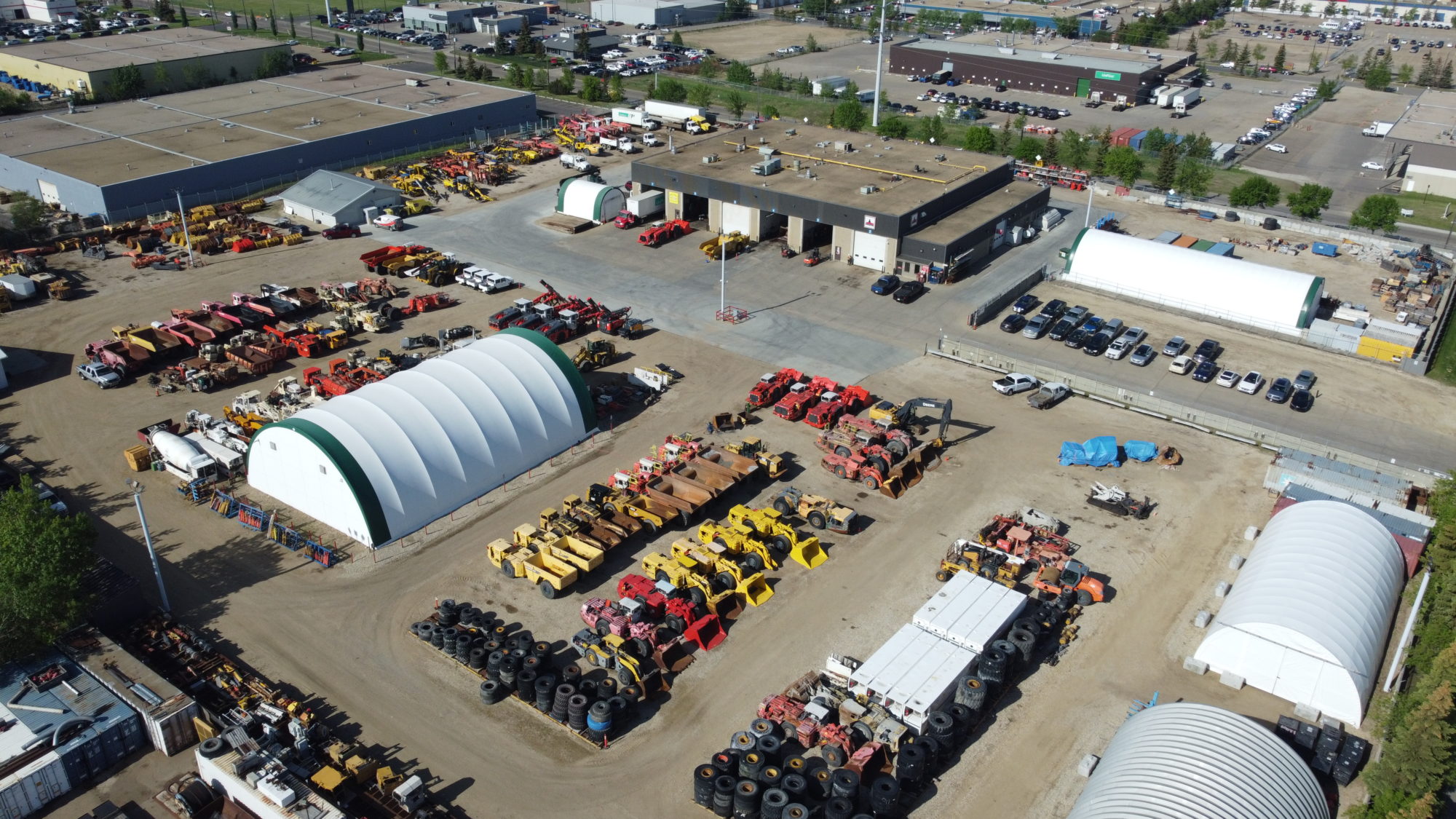Next year, 2025, will be the 35th year in business for Amalgamated Mining and Tunnelling, based in Edmonton, Alberta. What started out as a simple rebuild/refurb facility in 1990 has become a global player in underground machine rebuilds, new equipment sales and rentals, parts supply and other services. IM Editorial Director Paul Moore sat down with Vice President Colin Elson for some insight into how AMT got to where it is today and the unique value proposition it brings to the market.
So what enabled AMT to grow and expand to such as extent? “We started out as a rebuild facility for end users like mine owners and contractors. Even then a real source of pride was being able to move upgrade older equipment with newer technology. At that time, going from air brakes to hydraulic brakes was a big deal. Both then and today when we do rebuilds we want to stay competitive, so we look at why using us is beneficial for the end user. One of the things that makes a lot of sense is that we have the ability and the experience to understand what the new technologies entail. We don’t incorporate any technology that is still being trialled, and we only use proven technology that has already been in the market for at least four or five years.”
Colin Elson, Vice President, Amalgamated Mining and Tunnelling
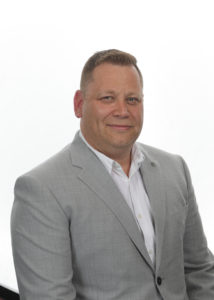
When AMT started incorporating new technologies, the founders and owners of Amalgamated including its President Tom Flanagan, realised that it had to have a diverse set of capabilities to be able to manufacture and remanufacture equipment instead of just rebuilds. This included the Cobra man carrier which was based on a Caterpillar platform and over time became very popular. The IP for that was eventually sold to a US company.
Elson told IM: “The next natural step to meet demand in the market was to offer new equipment but not where we would be competing with the major underground OEMs in the market. We looked instead at how we could work with them. We decided that the new machine rental business was the missing piece of the puzzle that we could get into – as it wasn’t competing with them, rather it was involving them and giving the end user another route when seeking new machines.”
Elson points out that if you look at a major OEM quoting a mine owner for a fleet of new equipment, there are not that many options – the customer can purchase or lease through the OEM finance houses – but AMT saw that it could pre-order new machine inventory based on its knowledge instead of waiting for orders. “We hold our inventory so that it is readily available at any time. The other side of that is that when the mine owner looks to upgrade and buy new machines, they are still left with their old machines. Do you take those and rebuild them and bring them up to newer standards? Or reuse them in a different market whether overseas or in other territories where there is still demand for it? Or third you recycle the engines and other major hardware components to support already running fleets. Amalgamated can offer solutions for all aspects of this three-tiered decision. So we say to the mine owner – we can offer you the same new machine that you would get from the OEM with the newest ratings and technologies – but we also give you options for your old machine asset. And because the new equipment is ready to go, there is no lead time or wait time.”
After and before a major rebuild of a Sandvik DD321 underground jumbo
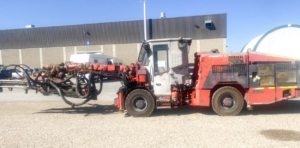
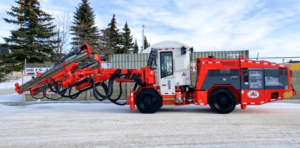
In tandem with all of this was ensuring this growth of the business was matched with the right people with the right experience and personality to implement and drive these new options for customers. Elson: “Just as an example, Tom hired me and I come from a long background of underground contract mining. And the same is true of all our other managers – they either come from an underground contract mining background, a mine owner-operator background or from an OEM supplier. So he made the company experience level matched all the customer options. This means we can walk into a customer mine and say – OK you have a 16,000 hour machine – we know it will last 17,000 hours so we have a bit of a gap. Here is a value we can put on that equipment and here are the options on refurbishment, rebuilding or replacing and in the case of replacing finding a home for that asset.”
This new equipment rental (and purchase) market really flourished – and today is AMT’s fastest growing business. Elson: “A part of that is that we have the OEM backing as well. To give you an example, someone looks to take a new Sandvik jumbo from Amalgamated, and we give them a value for the old equipment it is replacing. We normally have units in the stock of the model that is needed plus the customer still gets full OEM support on training, parts and service. So we haven’t taken anything away from the OEM partner.”
What about the options for the old machine? “There are scenarios where we can take that equipment out of their operation and refurb or rebuild it with new technology addition, and they use a rental machine from us as a stop gap until we return their machine. But probably the most common situation is where we replace the old machine with a new machine and then it is up to us what we do with the old asset.”
AMG’s new equipment rental and purchase market is its fastest growing business
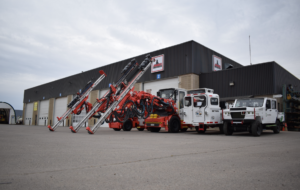
Then Amalgamated also buys used equipment on the open market to refurb/rebuild and repurpose. “South American and African markets are big equipment supply chains for us – as is Australia. And we have the buying power to look at full packages – so we would come in and not just look to buy one or two units. We would buy all or most of the fleet – say 50% of it we can rebuild and remarket; 25% of it we know it has another home as is in another location whether to a mine or to another rebuilder; and the remaining 25% we can recycle by using parts where we can – often the parts once rebuilt can end up being worth more than the whole core’s initial value. And this business has really thrived in recent years due to the supply chain crisis.”
There are lots of scenarios where an equipment package might become available – a mine comes to end of its life, or a contractor loses a contract or looks to sell off excess fleet. Or a mine has been mothballed and receivers are looking to sell off machines. AMT even has partners that can look at taking stationary processing equipment as well. So it can in some cases buy everything and find a home for it.
AMT is becoming increasingly global – 10 or even five years ago its home Canadian mining market still represented a majority of its business – today it has significantly grown its US business to almost equal its Canadian market, while its equipment repurposing business has significantly grown in Australia. North America and Australia together make up about 75% of AMT’s business today with other countries and regions the remainder.
What’s driving this global growth? “If you look at the values that we are carrying in our business, a big one is that we can and do work with everybody. We don’t set out to own or dominate any markets but to work with everyone in it. To give some examples – we work a lot with other rebuilders like QME in Ireland to give an example; we work closely with the major underground mining contractors in Australia; and we work well with the OEMs and contractors in Africa. And we work with mine owners, contractors and suppliers in South America.”
Taking QME as an example, the relationship covers equipment supply both ways – it buys from AMT and vice versa. And in some cases the two companies help market each other’s equipment.
Back to OEMs and AMT’s major alliance partner today is Sandvik followed by Getman and Kovatera. “With Sandvik we act as their rental arm in North America. This involves buying from them but also selling back to them based on supply and demand considerations. We bring the customer a full set of offerings. We can take their existing asset and replace with new with the options of purchase or rental, whichever fits their financial needs. When metal prices are low or for example during Covid, miners and contractors didn’t want to invest millions in a new machine – we were available with the rental option.”
AMT also deals with Sandvik on a global basis in terms of used equipment. “We’ve given them an outlet for any used equipment trade-ins of any brand that anyone wants to apply as part of a purchase or rental of a new Sandvik machine. Otherwise its a difficult proposition for them to see the value in the used machines. We can see the value, especially in terms of hard to get parts, plus we have our rebuild facility, parts facility and sales facility in-house to the point where we have the ability to put a new value on that older machine.”
For Getman and Kovatera AMT is a full dealer in certain regions. For Kovatera it is the US plus Western and Northern Canadian dealer and for Getman all of Canada and certain US states. In both cases this covers buying, selling, parts and support.
What are AMT differentiators versus others offering rebuilds, mid-life services etc? Elson: “As stated before our background and experience means a lot – we have a lot of people that used to operate underground machines in contracting and mining companies so they know how the machines tick. But another important point is the sheer value of machines that we run through our shops and deploy, redeploy and purchase back – in 2023 we deployed close to 180 underground units. Of those about 40% were used units, and these are mainly of the same type we have rebuilt in previous years – so the experience level from a shop point of view is key as well in terms of repetition of work.”
With new equipment buys being a big part of AMT’s business to create a stock for new sales and rentals, how can it predict annually how many units and what types to buy from the OEM? “Our sales group is very engaged with our customer base and spend a lot of time on the road so we have a great feel for what projects are coming up and what is being permitted, plus what funding is out there for different projects. And watching what is happening with commodity pricing in the background. Of course we never get it 100% right but we are at that point where whatever we order we know is going to be deployed, and we have the used equipment line to fill any gaps that do come up.”
AMT says it carefully considers the unique needs and readiness of each customer when introducing the latest technologies. “We understand that not every operation currently has the facilities or workforce to fully integrate and maintain these advanced technologies. For example, while there is significant interest in BEVs, we recognise that not all operations are ready to transition at this moment. BEVs are still accumulating real-world operating hours, especially in production environments. Plus all the other questions around infrastructure – is the mine set up with the right electric supply; does it have the right ventilation requirements; are the right technicians available to support the machines; and does the OEM have the right support in place?”
With conventional equipment there is still a lot of room to improve it, such as with more efficient and higher Tier engines in particular. “But of course as a company we are keeping abreast of what is happening in the BEV space. Plus We offer the Kovatera battery machines – and lots of mines are in a position to use that because it isn’t a primary fleet machine so the risk and cost involved is lower for us and for the customer but it gets them experience with a high quality BEV machine.”
It is clear that AMT has a special position in the market and one that is likely to continue to grow with the market and evolve with its needs. Underlying it all is a great value proposition for both customers and OEMs; and ulitmately one that is sustainable as it is finding new homes for used equipment instead of it being idled or scrapped.











